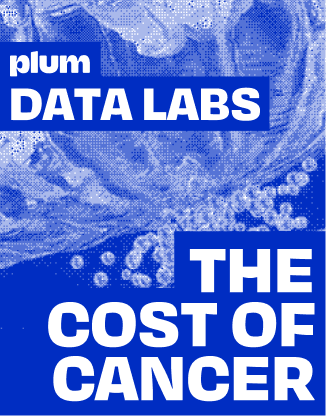The coronavirus outbreak essentially brought the whole world to an immediate standstill. Now, with things finally looking up, we have the time to reflect on what would have, could have, and should have been done to mitigate the adverse effect it has had on our lives. It wasn’t just industries, companies, or small businesses that were affected - it was people, like you and me. India was the second-worst coronavirus-affected country in the world - and the ground realities are simple. People lost their lives to it, at an alarming rate.
There’s no single answer to the solution. But one factor that did contribute heavily to the mortality rate is the increasing cost of treatment, and notably, health insurance.
India has the second-most underinsured population in the world, with extremely low health insurance penetration in particular. There are many reasons for this, primary among them being the sheer cost. 86% of the rural population and 82% of the urban population are not covered under any scheme of health insurance. It’s also worth noting that 7% of that combined population are usually pushed below the poverty line because of it. It’s a heavy investment by itself, and yet the cost of not opting for it is even higher.
That being said, the slimmest of silver linings during the pandemic situation is that it has changed how people think about, and approach health insurance today. While it still remains a considerable expense, more people are now determined to get themselves and their families insured. And in order to rise up to the surge of new customers, insurance companies have made some significant developments to match this demand.
In many ways, the insurance industry is one of the few that has come out of the pandemic stronger than ever, even though it suffered several setbacks. Let's take a look at how it was affected - for better and for worse:
More people consider investing in Health Insurance today
Covid-19 has fundamentally changed our daily routines, the way we work, and how we spend our time. Since most of this time was spent at home, surrounded by news about rising cases and imminent risk, it has made us that much more conscious about our health.
Before the pandemic, in India, only 10% of people were interested in buying health insurance for new diseases. This is understandable - before the virus, this would have been akin to paying for meteor-strike insurance. It could certainly happen, but it’s probably not going to.
Until it does.
Today, 71% of people consider health insurance as a necessity to fight diseases like Covid-19. The huge costs and long quarantine periods have made people realize that things can change for the worst frighteningly fast and that being insured secures them from sky-high medical expenses. The pandemic was an unpleasant wake-up call for many people, and as a result, inquiries on health insurance rose nearly 30-40% in March.
Digitalization of the Insurance Industry
The travel and movement restrictions caused by Covid-19 have maximized the creative use of technology and the internet for all businesses. The Insurance Regulatory and Development Authority of India (IRDAI) took instant measures to regulate the distribution of insurance online. The government also announced a National Digital Health Mission (NDHM), which is a complete digital health ecosystem with personal health IDs for every citizen of India.
Insurance companies also have made several provisions in digitizing their services, such as offering health plans, filing claims, and paying premiums online. While some of these services were also offered in the past, they have now become a necessity, and not just an option. This has made it doubly important to streamline the entire digital insurance experience, and has made both usage, and access to insurance much simpler for everyone.
Tele-consultations have also been made available, so people can connect with doctors directly over a phone call, to assess their own health conditions. This practice reduces the risk of people contracting the virus, by minimizing physical contact.
Recently, some user-centric digital distribution channels have also come to light. For example, Plum is a service that goes beyond offering vanilla insurance plans, and aims to ease the process of finding and purchasing the right insurance policies. They also offer 24/7 live chat support features, and the Plum app enables you to easily access your insurance ID on your phone at any time.
New Insurance Services
Through IRDAI, the Government of India mandated insurers to provide two types of Coronavirus cover - Corona Kavach, and Corona Rakshak - to be availed as per the needs of people. These are specifically designed to be short-term and carry fixed benefits. Such programs go a long way to helping people who cannot afford long-term insurance and offer a modicum of relief to those that would not be able to cover the medical costs otherwise.
The IRDAI has also taken a “Sand Box” approach that invites applications from insurance companies to share their ideas for new insurance services, which would be tested live in a controlled environment. This aims to promote innovation in the insurance sector and encourages the entire industry to come together, at a time when the country needs them the most.
Reserves Requirement
The prosperity of the insurance industry is closely tied to the banks. When interest rates fluctuate, it becomes harder for companies to hold a steady credit risk. Due to the pandemic, the Government and the Reserve Bank of India have had to reduce rates of interest on loans taken from commercial banks by consumers (bond interest), and the rate at which the RBI lends money to commercial banks (repo rate). As a result of this, it has become increasingly difficult for insurance companies to maintain liquid reserves, putting them in an unsafe financial position across the board.
From a shareholder point of view, Covid-19 has caused a sharp increase in high-value insurance claims and policy liabilities. This, coupled with most companies’ precarious financial state at this time, means that dividend rates are at an all-time low. With the crumbling bond rates, insurance companies might also face a sudden downfall in their businesses, leading to reinvestment risk in the long term.
In the End
The pandemic has certainly had a strong influence on the insurance industry. There is now an abundance of innovatively designed health insurance products to suit the present-day requirements of the citizens, as well as a much needed boost to digitalization and online accessibility.
Where previously, health insurance seemed like a daunting, complicated process, it is slowly becoming much more approachable, with more people actively choosing to opt for them. Having everything available has made research, purchasing, and managing one (or multiple) schemes easier, and more importantly, much safer.
Considering how limited human interaction has now become, insurance companies are trying to simplify the language of their policy benefits, so customers can easily understand it for themselves. They are also aiming to make product descriptions more precise, to maintain transparency and establish trust with their customers. Not to mention, these improvements also create greater access for people across educational and economic backgrounds.
If you are looking for the highest quality health insurance coverage in India with the best user-experience, Plum is your answer. Get your first health insurance with Plum, you won’t regret it.
.avif)










.avif)














